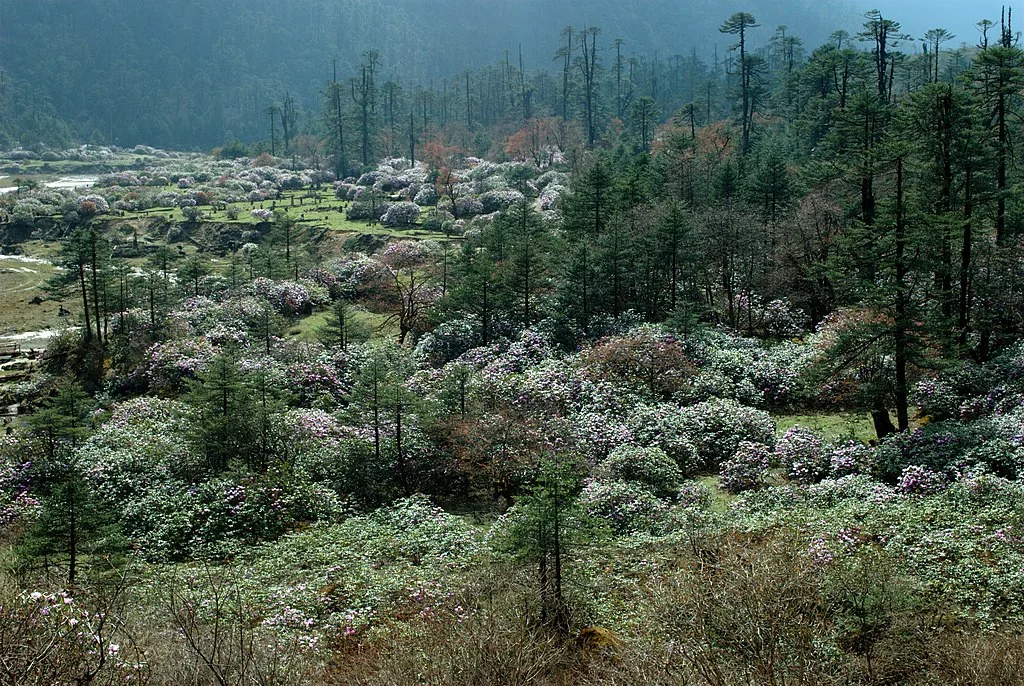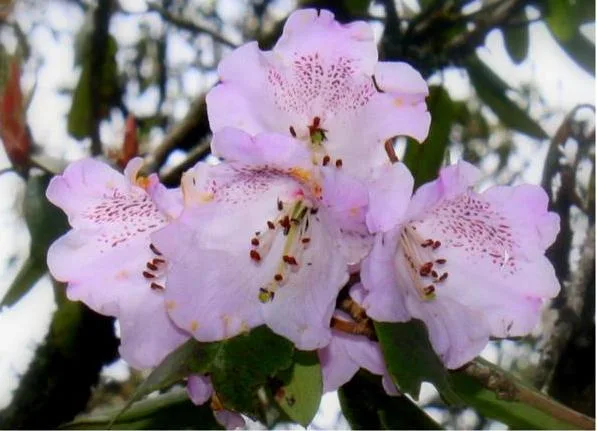Nestled in the heart of Sikkim, Fambong Lho Wildlife Sanctuary stands as a testament to the rich biodiversity and natural beauty of the northeastern region of India. This sanctuary, cradled by the Eastern Himalayas, invites nature enthusiasts on a journey of exploration. In this article, we will unveil the historical tapestry, the diverse flora and fauna, and the immersive experiences that make Fambong Lho Wildlife Sanctuary a hidden gem in the lap of the Himalayas.
What is Fambong Lho Wildlife Sanctuary Famous For?
Fambong Lho Wildlife Sanctuary is celebrated for its unique ecosystems and the mesmerizing landscapes that define the Eastern Himalayas. Located near the capital city of Gangtok, the sanctuary is renowned for its lush greenery, diverse flora and fauna, and panoramic views of the surrounding mountains.
History of Fambong Lho Wildlife Sanctuary
The historical roots of Fambong Lho Wildlife Sanctuary are intertwined with the cultural and ecological significance of Sikkim. Established to preserve the delicate ecosystems of the Eastern Himalayas, the sanctuary reflects Sikkim’s commitment to conservation. Fambong Lho Wildlife Sanctuary stands as a testament to the state’s dedication to wildlife preservation and sustainable tourism.
Flora at Fambong Lho Wildlife Sanctuary
Entering Fambong Lho Wildlife Sanctuary immerses visitors in a vibrant tapestry of flora. The sanctuary’s landscapes showcase a variety of vegetation, from temperate forests to alpine meadows. The unique plant life contributes to the sanctuary’s allure and provides habitat for a variety of wildlife.
Temperate Forests

Fambong Lho Wildlife Sanctuary is characterized by temperate forests that cover the hillsides. Oak, rhododendron, and magnolia are among the prominent tree species, creating a lush canopy that provides shade and shelter for numerous wildlife species. The diverse flora contributes to the ecological richness of the Eastern Himalayas.
Alpine Meadows

In higher-altitude regions, alpine meadows come alive with a riot of colors during the blooming season. Wildflowers, including primulas and orchids, carpet the meadows, creating a picturesque landscape. The alpine vegetation adds to the biodiversity of Fambong Lho Wildlife Sanctuary.
Fauna at Fambong Lho Wildlife Sanctuary
The real allure of Fambong Lho Wildlife Sanctuary reveals itself as one encounters its diverse fauna. The sanctuary is home to a variety of wildlife, including mammals, birds, and butterflies. The varied habitats within the sanctuary contribute to a rich biodiversity that captures the essence of the Eastern Himalayan ecosystem.
Mammalian Diversity

Fambong Lho Wildlife Sanctuary is inhabited by various mammalian species, including the red panda, Himalayan black bear, and barking deer. The diverse landscapes provide ideal habitats for these mammals, offering wildlife enthusiasts opportunities to observe them in their natural environment.
Avian Residents

The sanctuary boasts a rich avian diversity, with numerous bird species gracing its skies and forests. Himalayan monal, blood pheasant, and various species of laughing thrushes are among the avian residents that enchant visitors with their vibrant plumage and melodious calls. Bird watchers can revel in the opportunity to spot and observe these feathered inhabitants.
Butterfly Species

Fambong Lho Wildlife Sanctuary is also home to a variety of butterfly species. The colorful butterflies add to the overall biodiversity of the sanctuary, creating a visual treat for nature enthusiasts. Exploring the park may offer encounters with these delicate and vibrant creatures.
Trekking and Nature Trails in Fambong Lho Wildlife Sanctuary

Embarking on treks and nature trails in Fambong Lho Wildlife Sanctuary is a journey into the heart of the Eastern Himalayas. The sanctuary offers well-marked trails that lead visitors through its diverse landscapes, immersing them in the tranquility and natural beauty.
Red Panda Trail
For those seeking a chance to spot the elusive red panda, the Red Panda Trail offers an immersive experience. The trail winds through the sanctuary’s forests, providing opportunities to observe not only red pandas but also other wildlife and bird species.
Rhododendron Walk

During the blooming season, the Rhododendron Walk takes visitors through the vibrant rhododendron forests. The trail offers a visual feast of colorful blooms and provides insights into the floral diversity of Fambong Lho Wildlife Sanctuary.
How to Reach Fambong Lho Wildlife Sanctuary
Nearest Airport and Railway Station
For those planning a visit, Bagdogra Airport near Siliguri is the nearest air gateway to Fambong Lho Wildlife Sanctuary. Alternatively, the New Jalpaiguri Railway Station serves as the nearest major railway station. From Bagdogra or New Jalpaiguri, the sanctuary is accessible by road, with public and private transport options available.
Road Connectivity
Fambong Lho Wildlife Sanctuary is well-connected by road, allowing access from various parts of Sikkim. The sanctuary’s entry points serve as gateways for visitors, and the scenic drive through the Eastern Himalayas adds to the anticipation of reaching this nature haven.
Accommodation Options
To enhance the Fambong Lho Wildlife Sanctuary experience, visitors can find accommodation options in and around Gangtok. Hotels, resorts, and eco-lodges offer comfortable lodging, allowing guests to immerse themselves in the tranquility of Sikkim’s wilderness. It’s advisable to check availability and make reservations in advance, especially during the peak tourist seasons.
Best Time to Visit Fambong Lho Wildlife Sanctuary
The optimal time to visit Fambong Lho Wildlife Sanctuary depends on personal preferences and interests. However, the spring and summer months are generally considered favorable for trekking and wildlife sightings.
Spring Season (March to May)
The spring months bring a burst of color to Fambong Lho Wildlife Sanctuary as the rhododendrons and other wildflowers bloom. This period is ideal for nature walks, bird watching, and enjoying the pleasant weather.
Summer Season (June to September)
The summer months offer a respite from the heat in the plains, making Fambong Lho a pleasant escape. The clear skies and blooming wildflowers enhance the visual appeal of the sanctuary. Summer is a great time for trekking and exploring the diverse landscapes.
Things to Do at Fambong Lho Wildlife Sanctuary
Beyond trekking and wildlife exploration, Fambong Lho Wildlife Sanctuary offers a range of activities to engage visitors and provide a deeper understanding of its unique ecosystems.
Bird Watching
Given the rich avian diversity, bird watching in Fambong Lho Wildlife Sanctuary is a rewarding activity. The varied habitats, including forests and meadows, offer a plethora of bird species for enthusiasts to observe and identify.
Photography
The scenic landscapes and diverse flora and fauna make Fambong Lho a paradise for photographers. From sweeping vistas to close-up shots of unique plant species, the sanctuary offers countless opportunities for capturing the beauty of the Eastern Himalayas.
Cultural Exploration
Fambong Lho Wildlife Sanctuary is located in the culturally rich state of Sikkim. Exploring nearby villages allows visitors to experience the local culture and traditions. Interacting with the communities provides insights into the traditional lifestyle of the Himalayan region.
Interesting Trivia about Fambong Lho Wildlife Sanctuary
- Floral Diversity: Fambong Lho Wildlife Sanctuary is home to a rich variety of flowering plants, including numerous species of rhododendrons. The sanctuary’s floral diversity adds to the visual appeal of its landscapes.
- Conservation Efforts: The sanctuary actively participates in conservation efforts to protect the red panda, a vulnerable species. Conservation initiatives focus on preserving the habitat and raising awareness about the importance of biodiversity.
- Sacred Groves: The region surrounding Fambong Lho Wildlife Sanctuary features sacred groves, areas protected by local communities for their cultural and religious significance. These groves contribute to the overall biodiversity of the sanctuary.
In conclusion, Fambong Lho Wildlife Sanctuary stands as a biodiversity haven in Sikkim, inviting visitors to witness the untouched beauty of the Eastern Himalayas. From the diverse flora and fauna to the lush landscapes and cultural connections, every aspect of the sanctuary beckons nature enthusiasts to embark on a journey of discovery.
